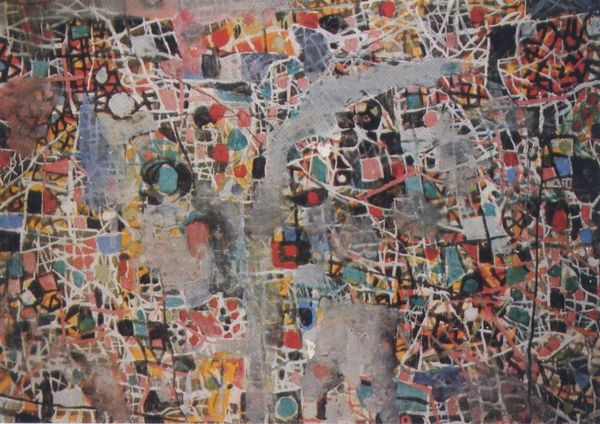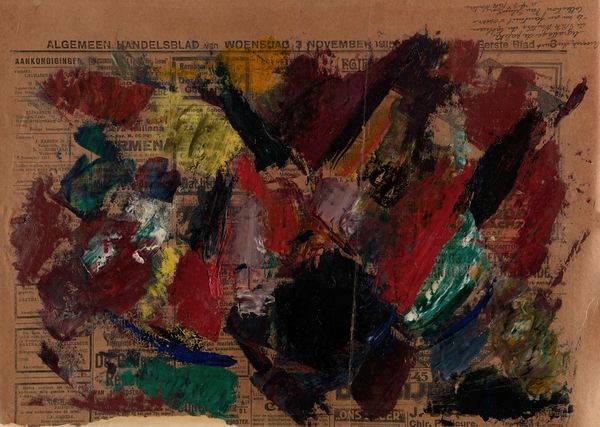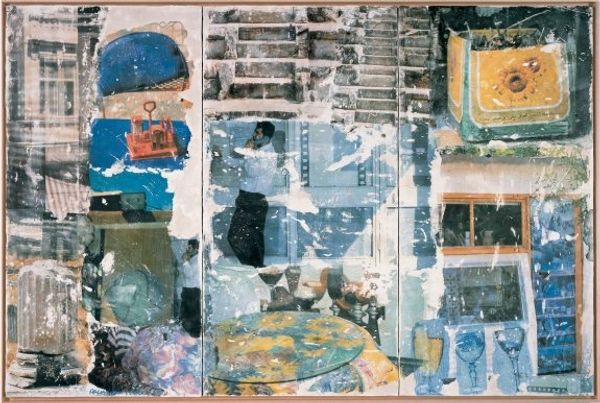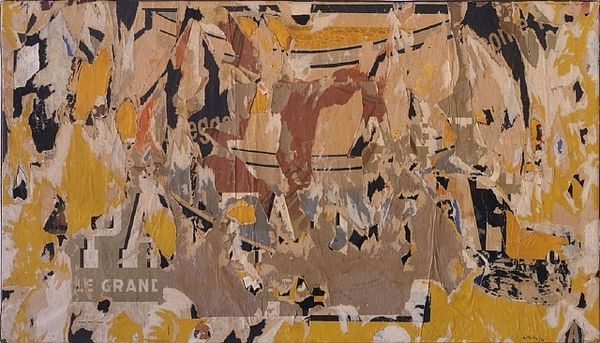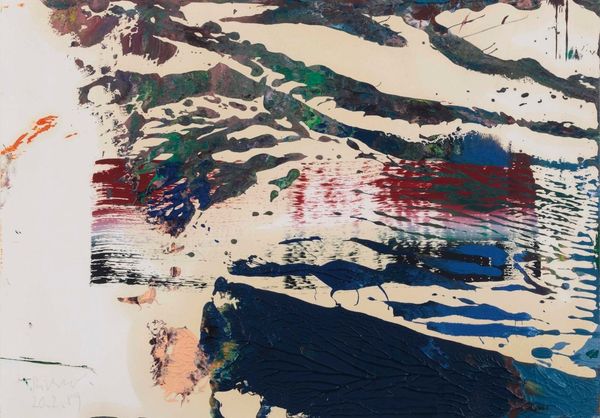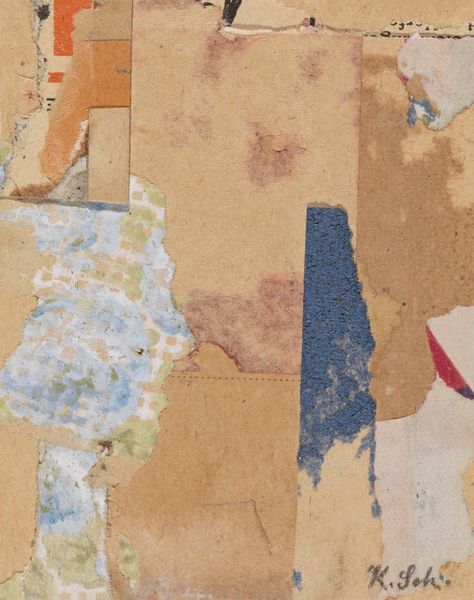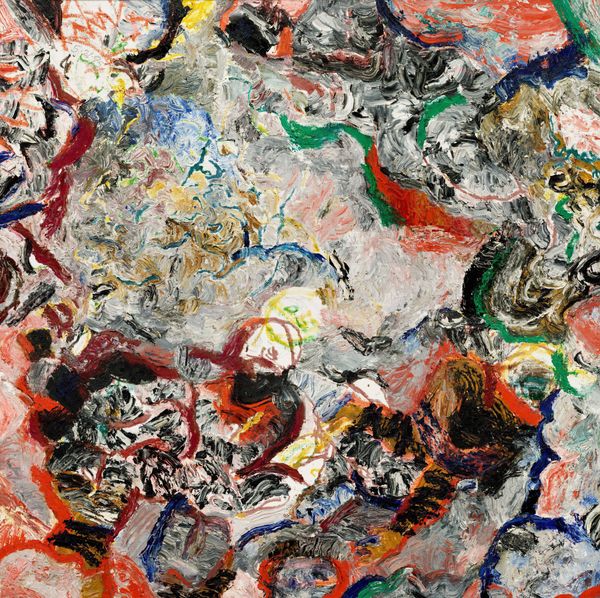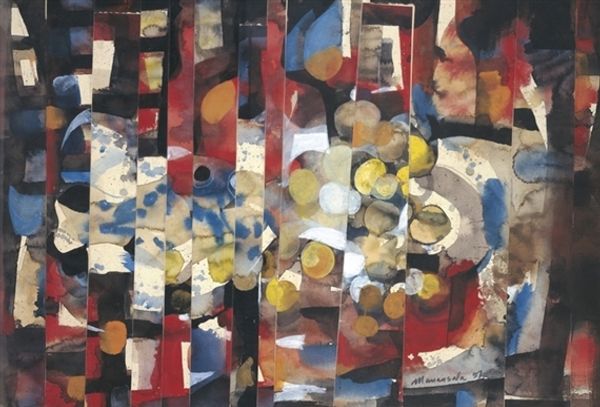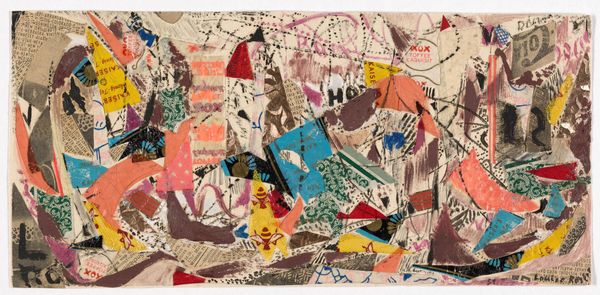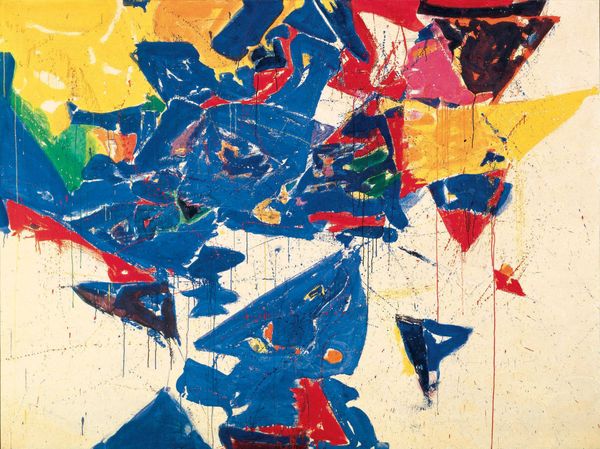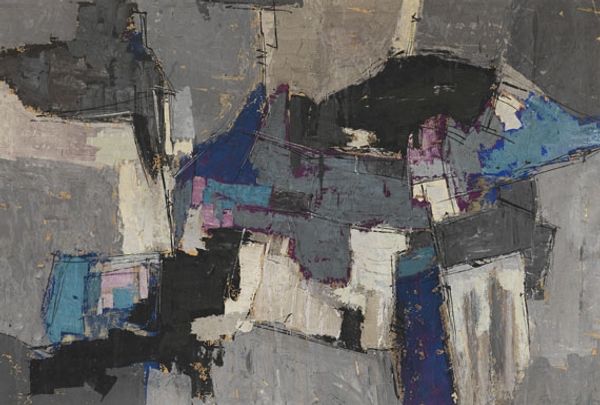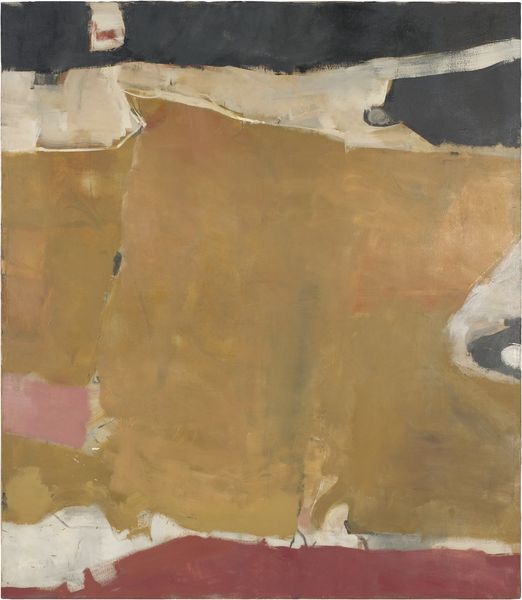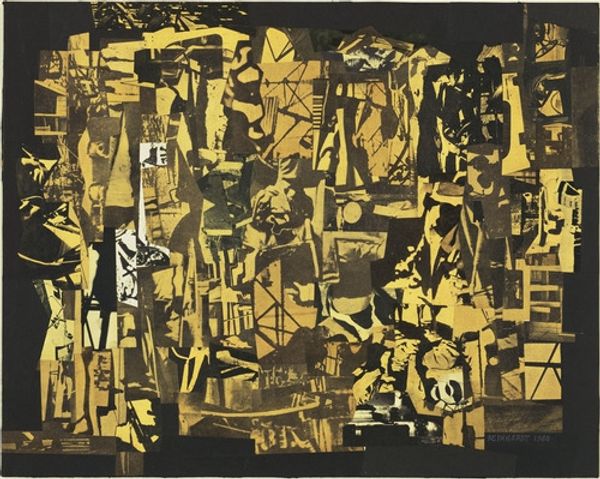
mixed-media, collage, décollage, poster
#
mixed-media
#
street-art
#
collage
#
pattern
#
appropriation
#
décollage
#
pop-art
#
nouveau-réalisme
#
poster
#
mixed media
#
monochrome
Copyright: Mimmo Rotella,Fair Use
Curator: What strikes me immediately is the overall flatness and fragmented texture. The layering creates a very tactile surface, doesn't it? Editor: Indeed. We're looking at Mimmo Rotella's "Untitled" from 1957. Rotella worked extensively with the décollage technique, essentially creating art through the removal of material, in this case, layered posters. Curator: So, he's actively taking away, un-gluing layers—a form of artistic excavation. I'm interested in the act of taking something that was initially mass produced—the poster—and transforming it through manual labor into a unique artwork. The process here is key, revealing how the forces of consumption and material decay are intertwined. Editor: From a formal perspective, note the interplay of geometric shapes revealed in the fragments, offset by the tattered edges and distressed textures. The artist is intentionally directing our attention to these visual contrasts, building the artwork by concealing what once was rather than adding something completely new. Curator: The medium—torn posters— speaks volumes about postwar consumer culture and the ephemeral nature of advertising. This 'street art' aesthetic challenges established notions of artistic value by elevating mundane, often overlooked materials into high art. Were these posters deliberately sourced, or were they simply found? Editor: It's fascinating how he takes these remnants of the urban landscape, rearranges and presents them in a formal context, effectively challenging conventional artistic boundaries. Through this process, meaning shifts and transforms. He allows the semiotic ghosts of discarded material to generate a new visual language. Curator: It does prompt a consideration of the socio-political conditions that shaped both the posters themselves and Rotella's choice to repurpose them. We are confronted with the lifecycle of the urban message – creation, consumption, and destruction – as an act of labor in the artistic creation. Editor: I find this dance between destruction and construction, flatness and depth, extremely compelling, revealing a unique aesthetic born out of a creative manipulation of visual signifiers. Curator: Considering its roots in material processes of labor and commodification reveals Rotella’s astute commentary on consumerism. Editor: And thinking formally, Rotella masterfully draws our eye into this constructed visual experience of destruction and renewal.
Comments
No comments
Be the first to comment and join the conversation on the ultimate creative platform.
